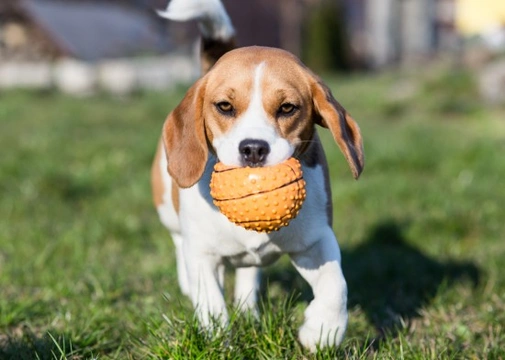
Four ways to teach your dog or puppy better bite inhibition
Bite inhibition is the term used to refer to the natural process by which a puppy learns to moderate the pressure that they apply to things with their teeth, and how to use their mouths effectively to hold and grasp things without damaging them or causing pain to another dog or person.
Bit inhibition is something that puppies begin to learn when they are very young, and still living with their dam and littermates. As puppies play-fight and wrestle, they naturally begin to use their mouths and teeth as part of play, and when they bite or nip another puppy too hard, they will elicit a yelp from them, which tells them that their bite has caused pain, and to lighten up. Also, the pup in question also learns from being bitten or nipped by their littermates that this causes pain in them, and that this is not desirable. By the time a puppy is old enough to be weaned and go off to their forever homes, they should already have a good grasp of bite inhibition, and be well on the way towards learning how to moderate their teeth!
However, bite inhibition is a learning process that continues after a pup goes to their new home, and is something that their new owners and handlers should continue working on. Some pups and older dogs do not manage to learn the full parameters of bite inhibition when they are young, which can lead to problems in later life when they nip or mouth, and inadvertently cause pain.
In this article, we will look at four simple ways to help to teach your puppy or adult dog better bite inhibition. Read on to learn more!
Taking a treat
Well-trained dogs and even adolescent puppies usually learn quickly that when given a treat, they need to take it gently and be careful of your fingers if they hope for their reward to be repeated! Even very energetic, fast-moving dogs usually learn to be gentle when taking a treat, but if your dog or pup runs the risk of taking a couple of your fingers along with the reward, this is something that you will need to work on!
When using treats to teach bite inhibition, make sure that your dog or pup is calm and relaxed, and not excited and in the middle of a game. Let your dog know that you have a treat, and then hold it in your closed hand and let them sniff it. If they nip or bite at your hand, tell them “no” or “no bite!” and raise your hand out of reach.
When your dog or pup will sniff your hand, nose at it, mouth at it or lick it without nipping or biting, you can go on to let them have the treat. For dogs and pups that tend to go overboard and nip your fingers, hold the treat in the palm of your hand, not in your fingers, until they get the hang of going gently and moderating their grip.
Hand tagging
Hand tagging is a game that involves getting your dog to nose, touch or mouth each of your hands in turn, in a routine of left and right. Some dogs will snatch at or nip at your hand, when again you will need to give the “no” or “no bite” command, and calm them down. The aim of the game is to work with your dog so that they are gently mouthing or holding your hand, and as they get progressively more excited, are still able to moderate their bite. When your dog starts getting over excited and more nippy, slow down or take a step back. Praise and reward for good bite inhibition!
Fetch
Most dogs like to play fetch, but not all dogs are quite as keen to hand over the toy that you have thrown once they bring it back to you! Your dog should drop the toy in front of you for you to take, and not require you to ply it out of their mouths! If, when you do need to take something out of your dog’s mouth, they nip or attempt to grab the toy back from you, once again it is back to “no” or “no bite,” and “gently,” until you can take the toy without risking your fingers. When your dog gives up the toy, praise and reward.
Tug of war
Tug of war can potentially be a poor choice of game to play with dogs that are nippy or have poor bite inhibition, as it ultimately involves inviting the dog to wrestle or tussle over something with you. However, when approached carefully, it can help to teach bite inhibition.
As your dog pulls on the toy or snaps higher up the toy to get a better grip, go through the process of “gently” and if necessary, “no,” and calm things down. When your dog has begun to grasp the toy gently but firmly rather than clamping down, and is actively trying to avoid your fingers, treat and reward.



